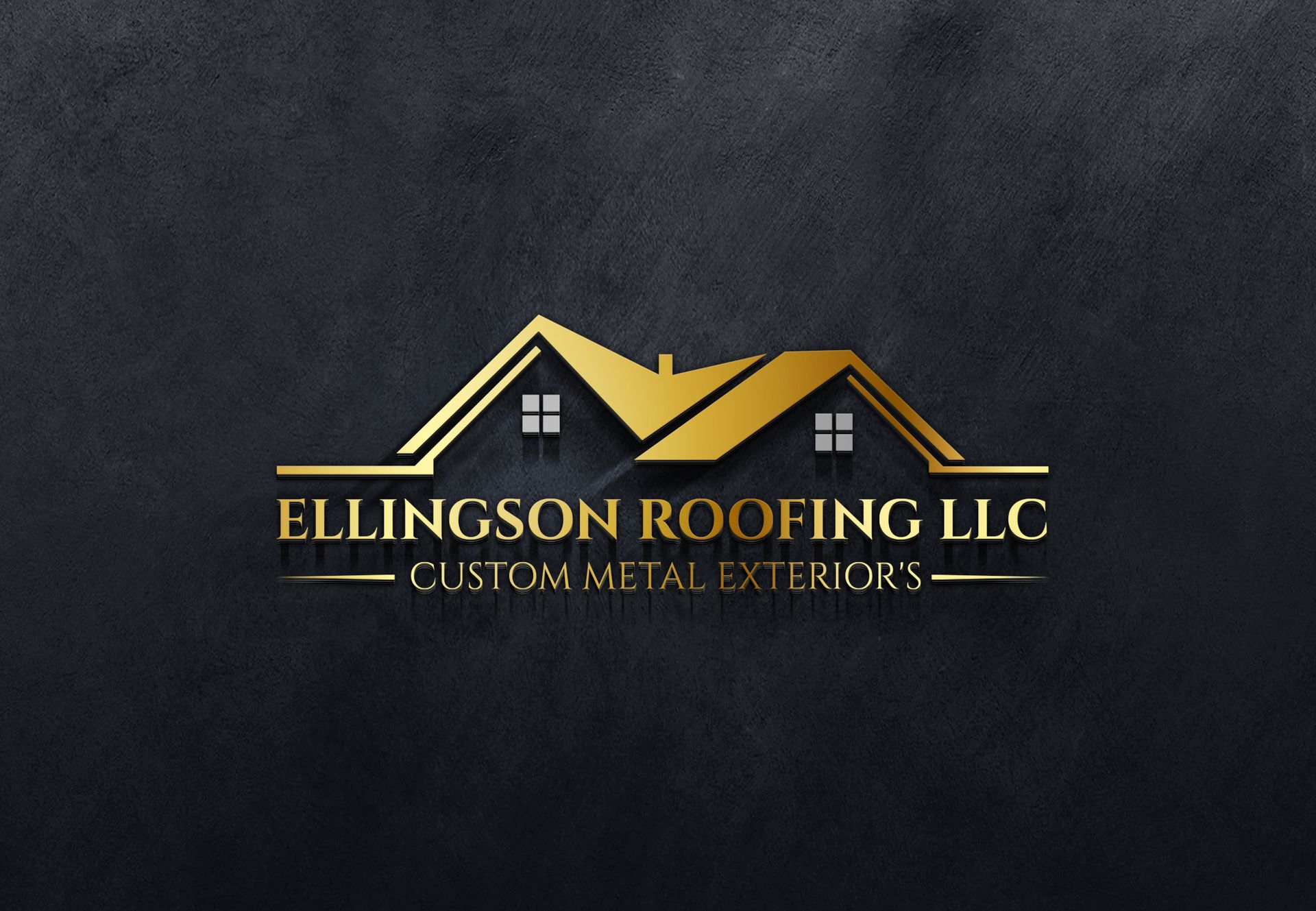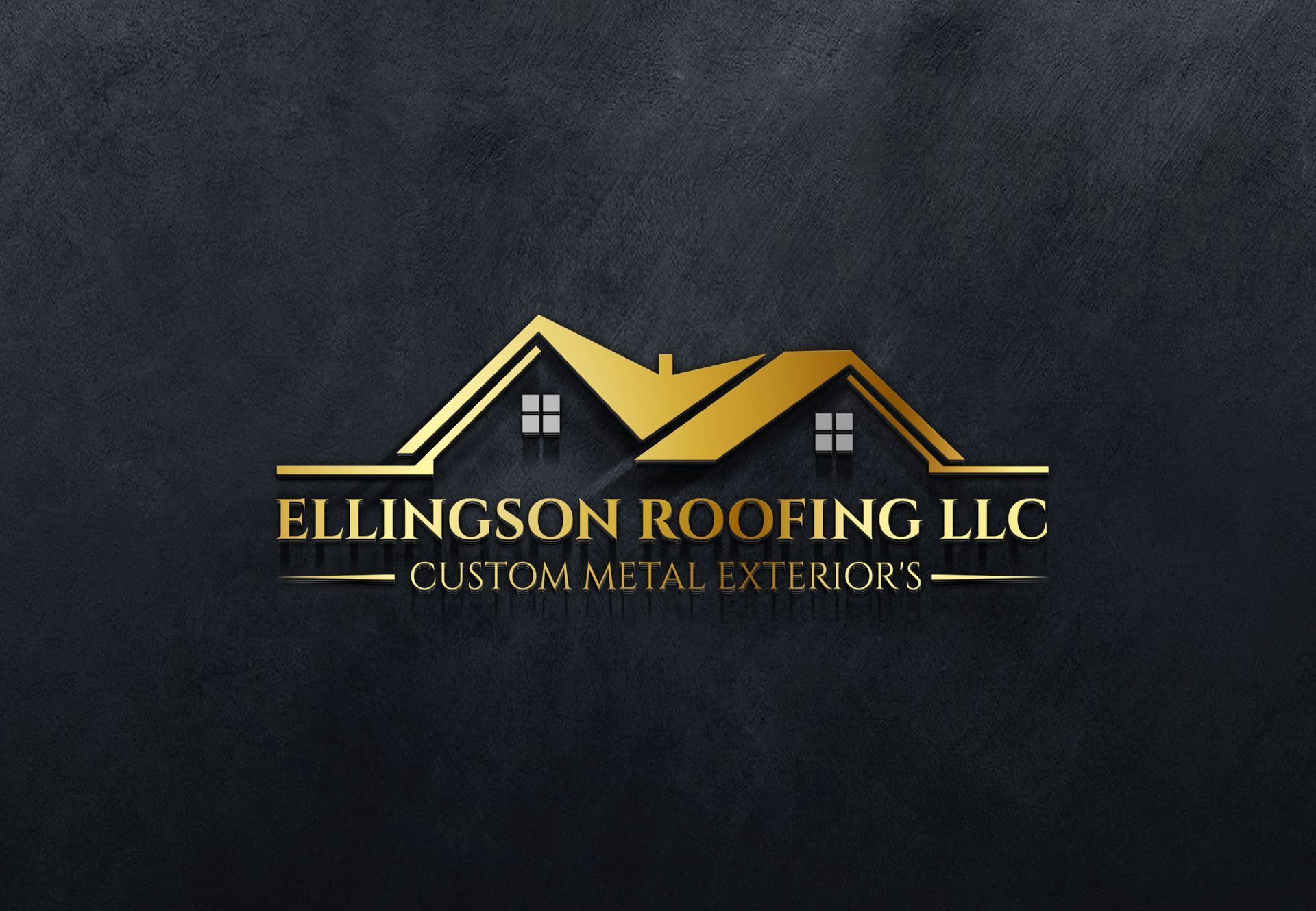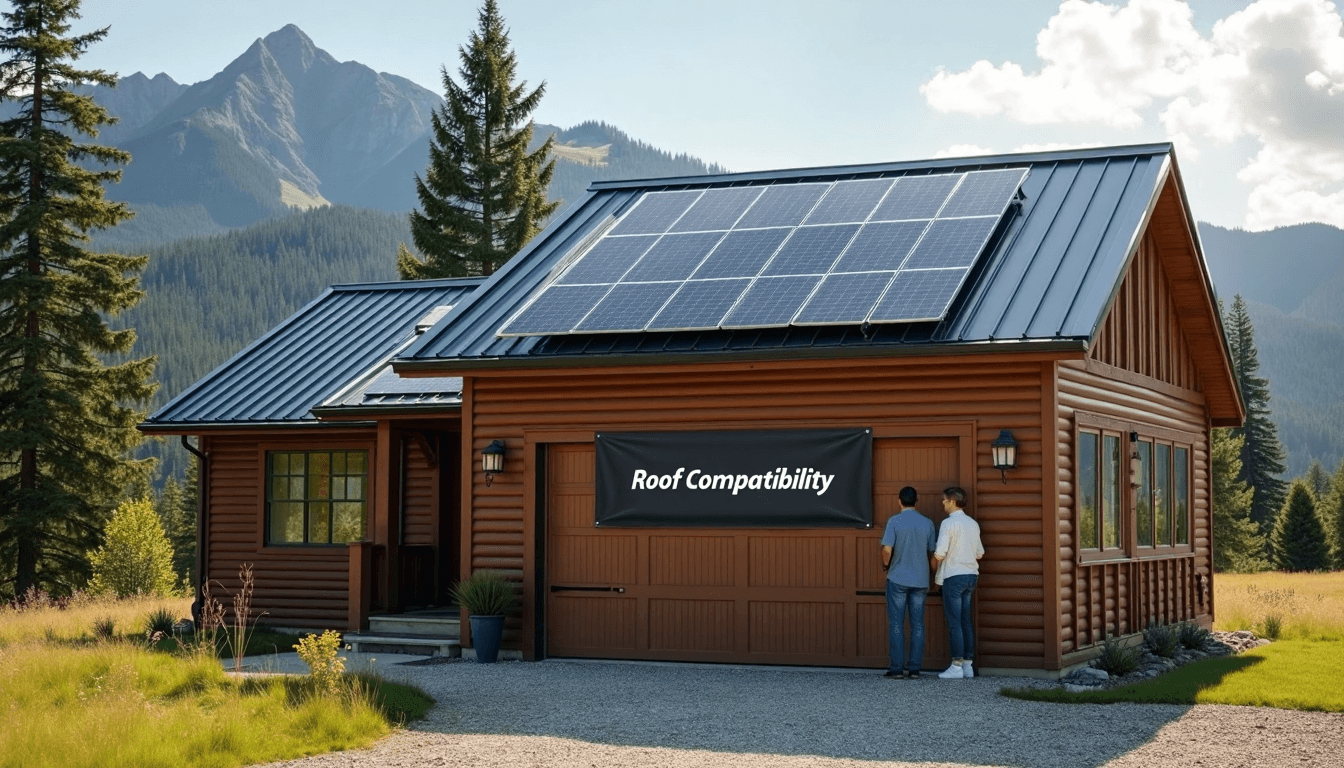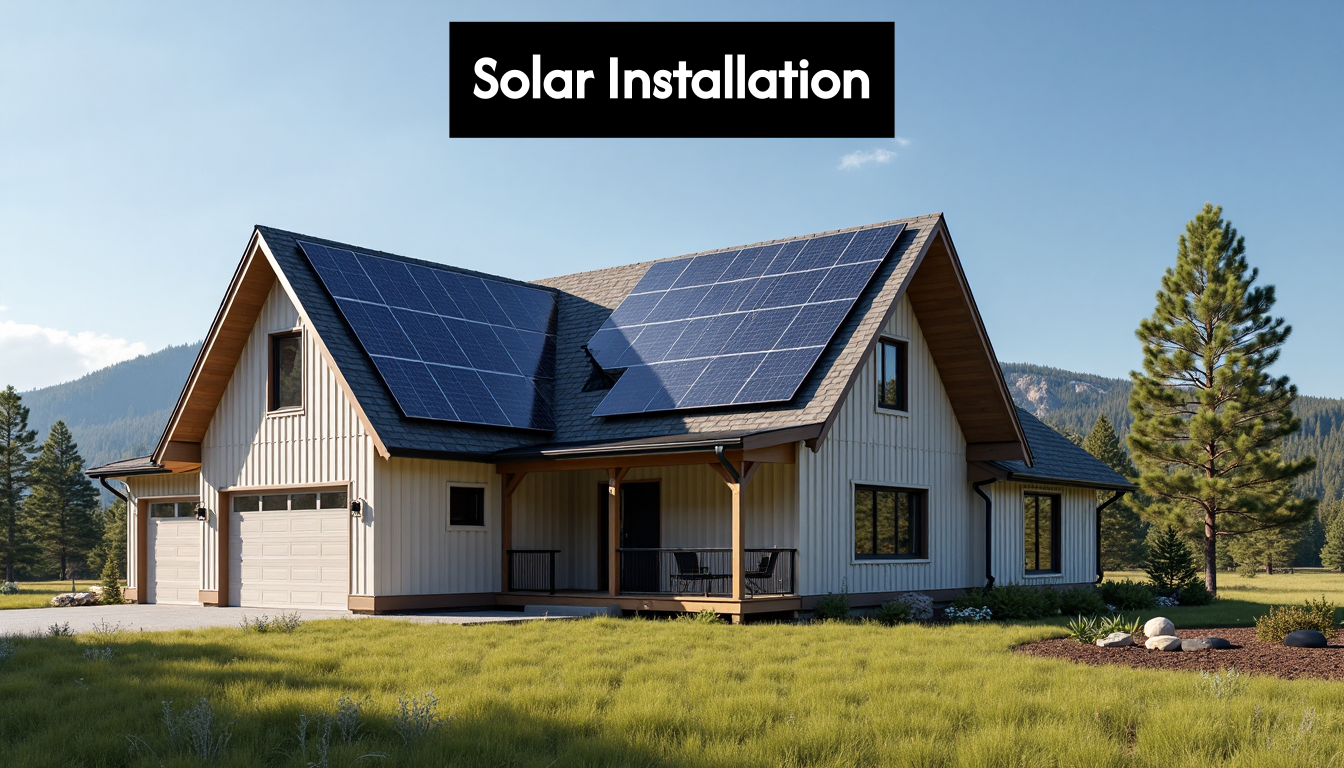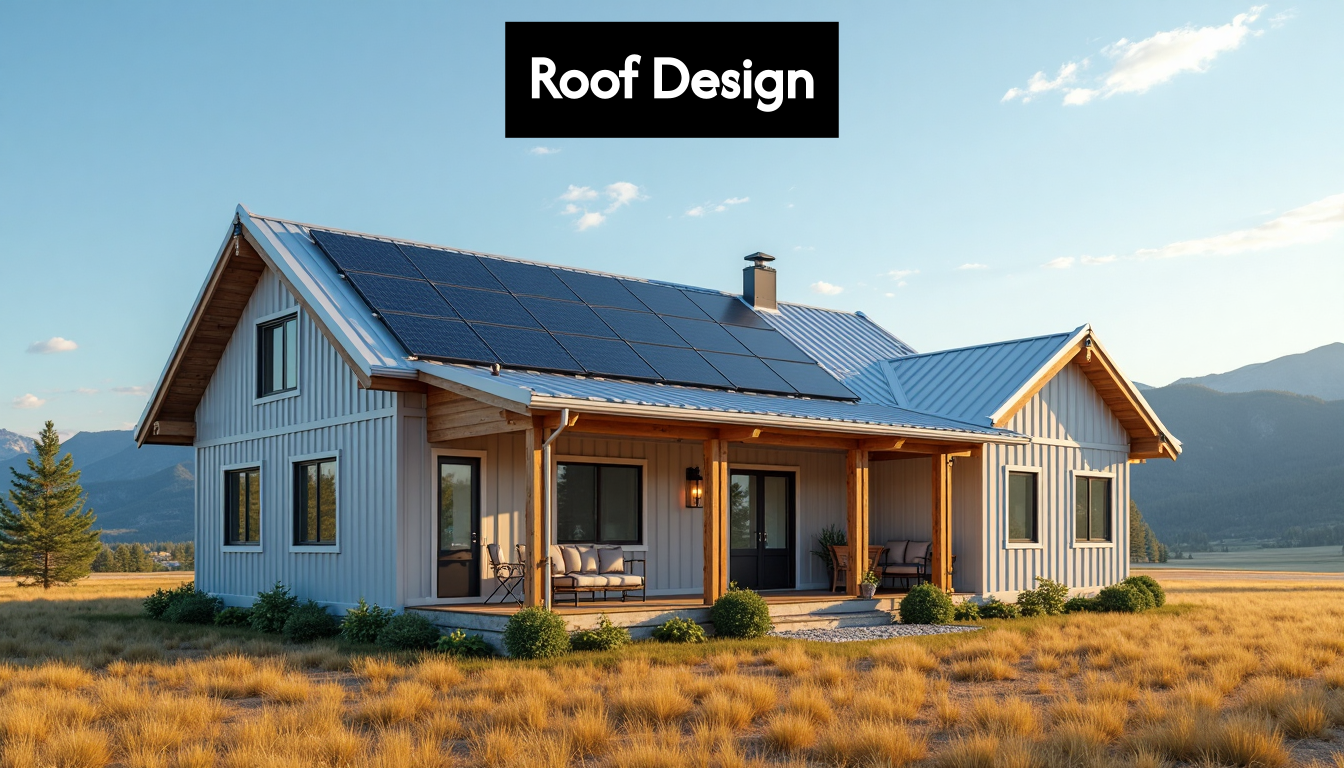Solar Energy Pros and Cons:
The Complete Guide to Costs, and How It Works with Your Electric Bill
Explore the pros and cons of solar energy, understand how solar panels affect your electric bill, and learn the difference between passive and active solar energy — including how Montana solar incentives can make switching even more affordable.
As more homeowners across the country consider switching to renewable energy, solar power has become one of the most popular and widely adopted clean energy solutions. Yet for many, important questions remain: Is solar energy really worth it? How do solar panels work with my electric bill? What’s the difference between passive and active solar energy? Should I buy or lease my solar panels? And what financial incentives exist — particularly for states like Montana?
In this complete guide, we’ll walk through the pros and cons of solar energy, explain how it integrates with your electricity costs, and break down all the essential terms you need to know before making a decision.
Table of Contents
- Introduction: Why Solar Energy is Growing Fast
- Solar Energy Pros and Cons
- The Pros of Solar Energy
- The Cons of Solar Energy
- How Do Solar Panels Work with Your Electric Bill?
- Do You Still Have an Electric Bill with Solar Panels?
- Renewable Energy Pros and Cons
- Passive vs Active Solar Energy
- What is Active Solar Energy?
- What is Passive Solar Energy?
- Leasing Solar Panels: Pros and Cons
- Montana Solar Incentives
- Six Common Questions About Solar Energy
- The Future of Solar Energy: A Smart, Sustainable Choice
Solar Energy Pros and Cons
Like any investment, solar energy offers a wide range of advantages, but it’s not without potential drawbacks. Understanding both sides will help you make an informed choice.
- Environmental Benefits: Solar energy reduces carbon emissions by providing a clean, renewable alternative to fossil fuels, helping to lower greenhouse gas contributions and protect the environment.
Solar power has become one of the most popular and widely adopted clean energy solutions. A solar energy system typically includes solar panels, inverters, and sometimes batteries, working together to generate and store electricity for use in homes or businesses.
The Pros of Solar Energy
First and foremost, solar energy allows homeowners to produce their own electricity using a free and abundant resource: sunlight. Over the past decade, solar panel technology has advanced rapidly, making systems more efficient, durable, and affordable. Modern solar panels also come with guarantees related to energy production performance, providing homeowners with added peace of mind.
When you install solar panels, you gain several major benefits:
- Reduced Energy Bills: Once your system is installed, your reliance on the utility company drops substantially, and solar panels reduce the amount you owe on electricity bills by directly powering your home and through net metering. Many homeowners see 50% to 100% reductions in their monthly electric bills, resulting in significant solar savings over time.
- Energy Independence: Producing your own electricity protects you from rising utility rates, inflation, and unexpected price hikes.
- Environmental Benefits: Solar energy produces zero emissions, helping reduce air pollution and carbon dioxide levels that contribute to climate change.
- Property Value Increase: Numerous studies have shown that homes with solar panels sell faster and at higher prices due to their long-term savings potential.
- Government Incentives: Both federal and state governments offer tax credits, rebates, and other financial incentives that make solar even more affordable.
How much you save with solar panels depends on factors such as system size, energy consumption, sunlight, and policy considerations.
The Cons of Solar Energy
While solar energy offers many advantages, there are also important considerations to be aware of:
- Upfront Cost: Even with incentives, the initial cost of purchasing and installing solar panels can be significant. However, solar loans and solar leases are available to help homeowners manage the initial investment.
- Roof Suitability: Not all roofs are ideal for solar. Shading, roof condition, orientation, and space limitations can affect system performance.
- Weather Variability: Solar production is highest in sunny conditions. Cloudy days and winter months can reduce output.
- Long-Term Commitment: Solar is a long-term investment. Homeowners should plan to stay in their home long enough to recoup their initial costs, and consider their future energy costs and how financing options like solar loans or solar leases may affect long-term savings.
How Do Solar Panels Work with Your Electric Bill?
One of the most common questions homeowners ask is: How do solar panels impact my monthly electric bill? Your power bill is determined by the balance between your electricity consumption and the amount of solar energy your system produces.
The answer depends on how much electricity your solar system produces compared to how much your household consumes. When your solar panels produce electricity, it first powers your home’s immediate energy needs. The interaction between your electricity consumption and solar production determines your solar panels electric bill each month.
If you produce more electricity than you use at any given moment, the extra energy—known as excess energy or excess solar electricity—flows back into the electricity grid, a process called net metering. The utility grid receives this excess power and also provides a backup source of electricity when your solar panels are not producing enough, such as at night or on cloudy days. Your utility company tracks this surplus and gives you net metering credits for it. Net metering credit is the accumulated energy compensation that utilities allow solar customers to use to offset their electricity bills during billing cycles, with annual true-up periods to reconcile surplus credits. Net metering credits accumulate when you export excess energy to the grid, and these credits can be used to offset your utility bill, including future electric bills.
At night or on cloudy days when your system isn’t producing enough electricity, you automatically draw grid electricity from the electricity grid, just like you did before installing solar. You may still rely on grid electricity during periods of low solar production. The credits you earned during high-production periods offset the electricity you pull from the grid. Excess solar electricity sent to the grid earns net metering credits, which can be applied to future electric bills.
Over the course of a full year, many homeowners are able to offset most or even all of their electricity costs through this system. The average monthly electric bill can be significantly reduced, and the utility bill may only include basic service charges. In some cases, you may still have a small monthly electricity bill or power bill to cover grid connection fees, basic service charges, or months when your production doesn’t fully meet your consumption. The solar bill refers to any monthly payments associated with financing or leasing your solar system, which is separate from your traditional utility bill. The electricity grid serves as both a backup power source and a recipient of excess energy.
Do You Still Have an Electric Bill with Solar Panels?
Even with home solar panels installed, you will likely still receive a bill from your local utility company. In most cases, yes — but it’s dramatically lower. Even when your solar system covers 100% of your energy usage over a year, utility companies may still charge a small monthly fee to stay connected to the grid, and these fees can vary depending on your local utility company’s policies. However, your energy supply charges — often the largest portion of your bill — will be significantly reduced or eliminated entirely.
The key takeaway is that solar doesn’t completely eliminate your electric bill, but it transforms it into something far more predictable and manageable.
Renewable Energy Pros and Cons
Solar power is just one form of renewable energy. Unlike natural gas, which is a fossil fuel with a higher environmental impact, solar energy is a cleaner, renewable alternative. Other renewables include wind, hydroelectric, geothermal, and biomass. As a whole, renewable energy offers tremendous potential to transition away from polluting fossil fuels, but it also faces some challenges.
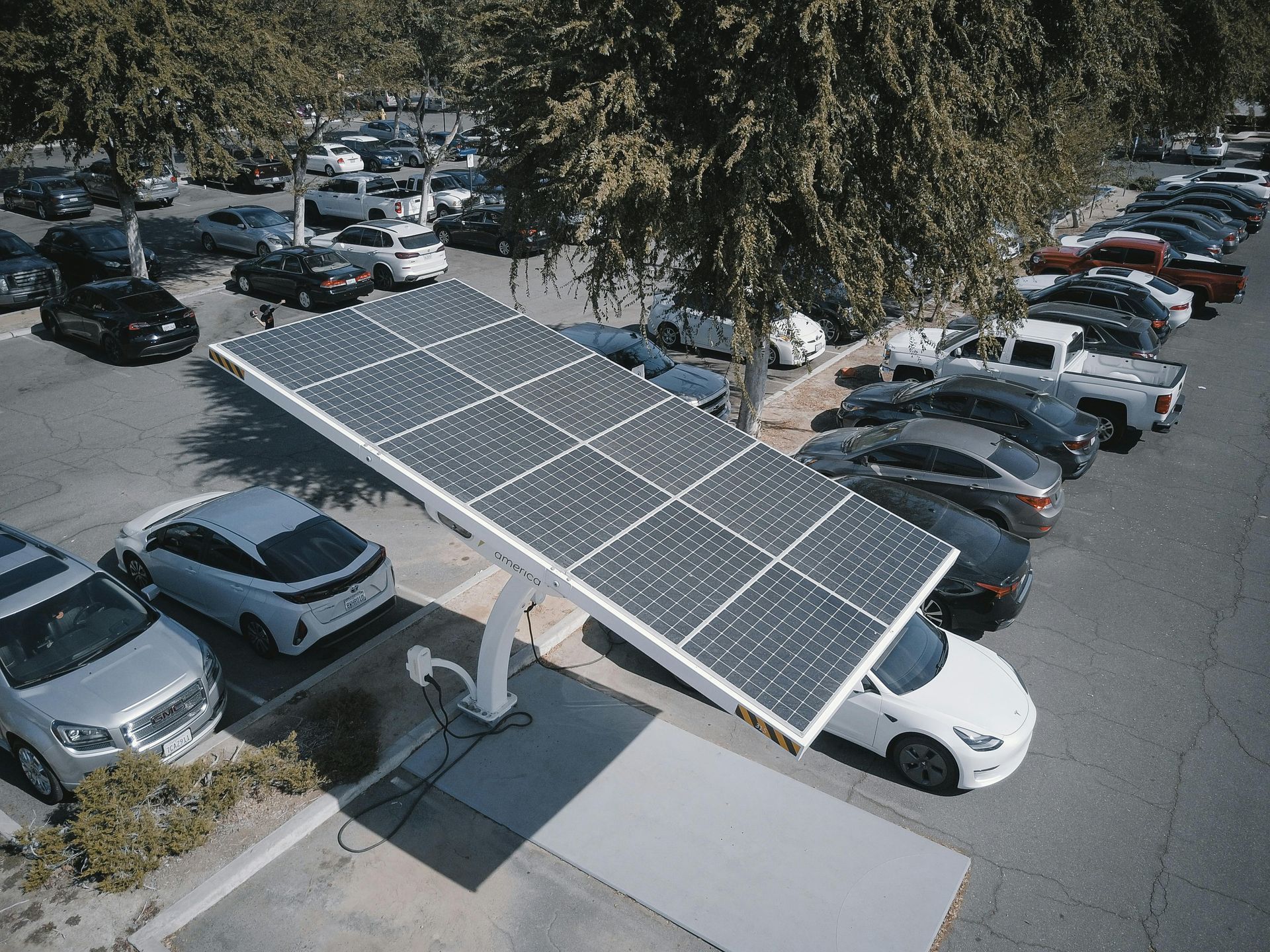
The Advantages of Renewable Energy
- Sustainable and virtually limitless resources
- Low or zero emissions during operation
- Reduced air pollution and environmental harm
- Job creation in growing green industries
- Long-term energy security and independence
- Ability to provide thermal energy for heating and hot water, especially through solar thermal systems. Solar thermal systems harness the sun's energy to deliver efficient heating solutions.
The Challenges of Renewable Energy
- Intermittency: Solar and wind depend on weather conditions
- Storage: Energy storage technology (batteries) is still evolving
- Infrastructure: Modernizing the electric grid takes time and investment
- Land use: Large-scale projects require significant space
Despite these challenges, renewable energy continues to grow rapidly, driven by technological innovation, policy support, and growing consumer demand.
Passive vs Active Solar Energy
When people think about solar power, they’re usually referring to active solar energy — the use of photovoltaic panels to convert sunlight into usable electricity. Active solar energy systems are designed to produce energy and are often referred to as a solar panel system, which is responsible for generating electricity for household use. However, there are multiple ways to harness solar energy, including both passive and active solar energy systems. But there’s another important category called passive solar energy.
What is Active Solar Energy?
Active solar energy involves systems that actively collect, convert, and distribute solar energy. These systems are responsible for producing solar electricity that can power your home and reduce reliance on grid power. This includes:
- Photovoltaic (PV) solar panels
- Solar thermal systems (for heating water)
- Solar-powered air conditioning systems (examples of solar-powered cooling systems)
- Solar batteries (to store excess solar electricity for later use)
Active systems use mechanical or electrical devices to capture and process solar energy for practical use in your home.
What is Passive Solar Energy?
Passive solar energy, by contrast, involves designing buildings to naturally make use of sunlight’s heat and light without mechanical systems. Passive solar heating systems rely on architectural design and thermal mass to naturally heat spaces, making them cost-effective and simple compared to active solar thermal systems. This includes:
- South-facing windows to capture winter sunlight
- Thermal mass (such as stone or concrete floors) to store heat
- Overhangs or shades to block summer sun and reduce cooling needs
Both passive and active solar approaches can complement each other, maximizing your home’s efficiency and reducing reliance on artificial heating, cooling, and lighting.
Leasing Solar Panels: Pros and Cons
For homeowners who want the benefits of solar but are concerned about upfront costs, solar leasing offers an alternative option. Homeowners can choose between a solar loan or a solar lease to finance their solar panel installation, making solar energy more accessible without a large initial investment. The monthly payment for financing or leasing the solar system is often referred to as a solar bill, which is separate from the traditional utility bill.
Pros of Leasing Solar Panels
- Low or zero upfront cost
- Immediate access to energy savings
- Maintenance and repairs often handled by the leasing company
- Easy entry into solar energy with minimal risk
Cons of Leasing Solar Panels
- Lower long-term savings compared to ownership
- Lease payments continue for the full term (often 20-25 years)
- Leased systems may complicate home sales or refinancing
- You don’t own the system, so you don’t receive tax credits or incentives directly
For many homeowners, owning their solar system outright — either through cash purchase or financing — provides the greatest financial return over time. Leasing can still be attractive for those who prioritize minimal upfront investment or short-term savings.
Montana Solar Incentives
Montana offers its own set of incentives that can make going solar even more affordable for homeowners in Big Sky Country.
- Federal Investment Tax Credit (ITC): Montana residents qualify for the 30% federal tax credit, just like homeowners nationwide.
- Montana State Tax Credit: Homeowners can claim up to $500 per individual ($1,000 per couple) as a state income tax credit for their solar installation.
- Net Metering: Montana law allows net metering for solar systems up to 50 kW, letting homeowners earn credit for excess electricity fed back into the grid.
- Property Tax Exemption: Like many states, Montana exempts solar systems from property tax assessments, ensuring your property taxes don’t rise due to your solar investment.
While Montana’s state-level incentives aren’t as generous as some states like Illinois or California, they still provide meaningful support that can significantly reduce overall system costs.
Six Common Questions About Solar Energy
How long does it take for solar panels to pay for themselves?
Most homeowners recoup their solar investment within 6 to 10 years, depending on system size, energy usage, and available incentives. After that, your savings continue for decades.
Will solar panels work during cloudy or snowy days?
Yes. Solar panels still produce electricity during cloudy conditions and winter months, though production is lower than on sunny days. Snow typically slides off panels, and cold weather can actually improve efficiency.
What happens if I move after installing solar panels?
If you own your system, the value often transfers to the home’s sale price. Buyers are often attracted to homes with existing solar systems due to the long-term energy savings.
Can solar panels power my home during a blackout?
Standard grid-tied systems shut down during blackouts for safety reasons. To maintain power during outages, homeowners can install battery storage systems that allow solar power to function independently from the grid.
Do solar panels require a lot of maintenance?
No. Solar panels are extremely low maintenance. Occasional cleaning and periodic professional inspections are typically sufficient to ensure optimal performance for 25 years or more.
What if my roof isn’t suitable for solar panels?
In cases where roof installation isn’t feasible, ground-mounted solar systems or participation in community solar projects may offer alternative solutions.
The Future of Solar Energy: A Smart, Sustainable Choice
As technology advances and incentives remain strong, solar energy continues to gain momentum across the country. Whether you're in Montana, Illinois, or anywhere else in the U.S., solar panels offer a powerful combination of financial savings, energy independence, and environmental benefits.
By understanding both the pros and cons of solar energy, how it integrates with your electric bill, and the different types of solar technologies available, you can make a well-informed decision that supports your financial goals and your commitment to a cleaner future.

